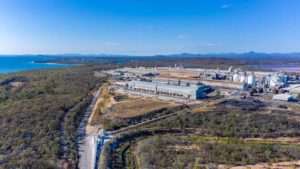In the face of heavy criticism that a 2030 emissions reduction target of between 26-28 per cent below 2005 levels was “pathetically inadequate”, the Abbott government’s consistent reply has been this: it’s all for the good of the economy.

“We are committed to tackling climate change without a carbon tax or an emissions trading scheme that will hike up power bills for families, pensioners and businesses,” said environment minister Greg Hunt in a media statement on Tuesday.
And from Abbott: “The last thing we want to do is strengthen the environment and at the same time damage our economy,” the PM told reporters at a press conference after the Coalition’s emissions target was announced. “That’s the Labor way, to put the environment ahead of the economy.”
So what is the real cost of the Coalition’s emissions plan? And what would the cost be under Labor? And are these figures accurate? Here’s what’s being said – and some of what isn’t…
Abbott government
According to the federal government, its emissions target will cost the budget about $200 million a year. According to Abbott, that amounts to a cost to the economy by 2030 of between 0.2 per cent and 0.3 per cent of gross domestic product, or about $3 billion to $4 billion “in today’s money”.
As Hunt tells it, the Coalition has allocated approximately $200 million a year for the Emissions Reduction Fund – the Abbott government’s scheme that uses taxpayer money to purchase emissions – or $2.4 billion over the 12 years from 2018 to 2030.
“It’s not cost-free,” Hunt told ABC TV’s 7.30, “but it is radically less than a massive electricity and gas tax.
Hunt said the next largest contribution to emissions cuts would come from as yet unspecified “technology improvements and other sources of abatement”, which he said could include battery storage for solar-generated power, as well as “carry-over” excess emissions reductions from the pre-2020 period.
Other reductions would be achieved through such measures as vehicle emissions standards, energy efficiency regulations and changes to the use of ozone and hydrofluorocarbons.
No one else agrees with his estimate. In fact, nearly everyone puts the cost of the target at a a huge multiple, and say it cannot be achieved with the current suite of policies.
Ai Group
According to Australian Industry Group chief executive Innes Willox, the Coalition’s emissions target is a “major step change from anything deliverable by current policies.” Ai Group estimates that if Abbott’s target were delivered solely through Budget spending it would cost between $100 billion and $250 billion in unadjusted terms.
For some perspective on the task, the Ai Group says that, even if the Opposition’s proposed 50 per cent 2030 renewable energy target were achieved, it would only deliver around one-sixth of the emissions cuts sought by the government.
“The numbers are huge,” Willox said. “And there is a good chance that even tougher targets will be needed to meet the 2°C goal shared by all sides of politics to manage the risks of climate change.”
The Climate Institute
The Climate Institute estimates that in the decade to 2030, relying solely on the Coalition’s Emissions Reduction Fund, taxpayers would fork out between $28 billion and $200 billion in nominal terms, depending on the carbon price per tonne. Both TCI and Ai Group say they used 2013 Treasury modelling.
RepuTex
Australia’s leading energy and environmental market analysts have a similar concern, which they voiced on Tuesday in a statement warning that they project the government’s $2.55 billion Emissions Reduction Fund will be fully eroded by next year, while emissions baselines proposed to be set under the government’s Safeguard Mechanism are set too high to have any impact.
“We project covered companies are likely to grow their emissions by around 20 per cent over the next decade under the government’s safeguard scheme – so current policy will fail to even curb emissions growth – let alone reduce emissions to meet the new target.
“The government has a significant policy gap to fill in terms of how it will address forecast emissions growth,” RepuTex said
Kobad Bhavnagri, head of Australia for Bloomberg New Energy Finance
According to Bhavnagri, “the reality is that if Australia desires a reduction in domestic reductions, the country must institute policies that reduce coal-fired power and boost renewables. If that doesn’t occur, Australia will have to consider a mechanism to purchase emissions reduction permits from other nations.”
Labor
The Abbott government’s other consistent message on climate policy costs – a message that is mostly being broadcast by the News Limited media – is that Labor, if it had its way on renewables and emissions targets, would cost the economy hundreds of billions and burn up tens of thousands of jobs.
On Monday, the Daily Telegraph reported that the ALP’s proposed emissions cut of 40-60 per cent (a target the ALP is now distancing itself from) would strip $600 billion from growth over the next 15 years, slash tens of thousands of jobs and lead to the closure of all 37 coal-fired power stations in Australia.
“Labor’s plan, which the party adopted last month at its national conference in Melbourne, would have to assume a carbon price of $209 a tonne by 2030, according to analysis of the models,” the paper said.
“It would also push wholesale power prices up 78 per cent over the next 15 years, radically increasing power bills for homeowners and businesses.”
And on Wednesday, the same Murdoch-owned paper repeated these figures in an editorial piece, headlined “Shorten’s climate push hits workers”.
However…
On closer examination, the modelling actually shows the economy would continue to grow strongly while meeting such a target, but by a slightly lower rate than it would if we did nothing. If you add up the dollar value of that slightly lower growth rate from now to 2030, you get $450 billion. If you adjust that from 2012 dollars you apparently get $600 billion. But that is $600 billion reduction in GDP from cumulative GDP increase of $44 trillion. Which makes the number a lot less scary.
The cost of externalities…
According to the AMA, the estimated health costs associated with outdoor air pollution are up to $8.4 billion per annum and, across Australia, the costs associated with motor vehicle emissions alone are estimated to be between $600 million and $1.5 billion per annum. The CSIRO have estimated that the cost of poor indoor air quality in Australia may be as high as $12 billion per year.
Many others have labelled the Coalition’s target “economically irresponsible”, when you factor in the Big Picture on climate change.
“The government’s weak target is also bad for the economy,” said TCI chief John Conner on Tuesday. “As many other nations continue to step up actions to limit emissions and modernise their economies through clean energy and other investments, this target implies that Australia will be the most pollution intensive developed economy by 2030.”
And UNSW climate researcher Steven Sherwood said Abbott’s excuse that he was looking out for Australia’s economy made “absolutely no sense,” considering global warming posed “a much more serious risk to our future economy than conservation or alternative energy would.”
And finally, Emma Herd, the CEO of the Investor Group on Climate Change, said this: “Shallow targets which delay effective action will exacerbate investment risks and increase costs. With the right policy framework, investors will make the long-term, low carbon investment allocations needed to tackle climate change and ensure Australia’s ongoing competitiveness.”










